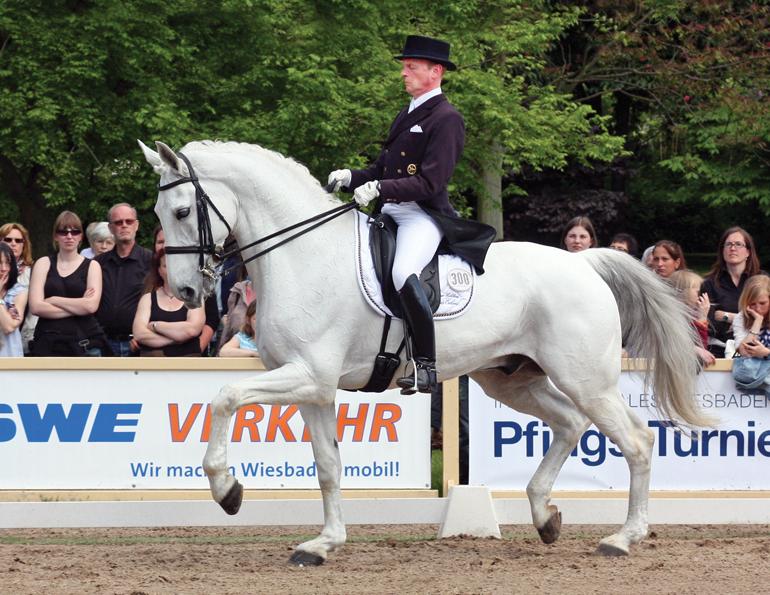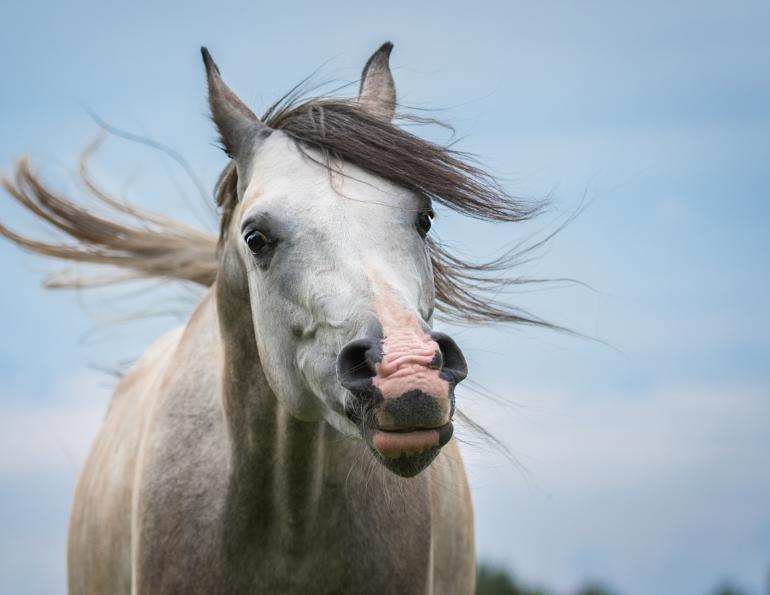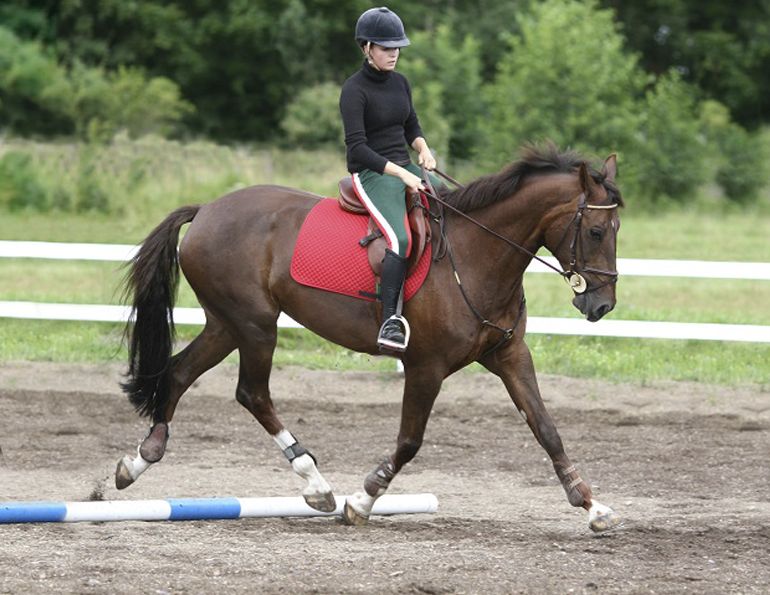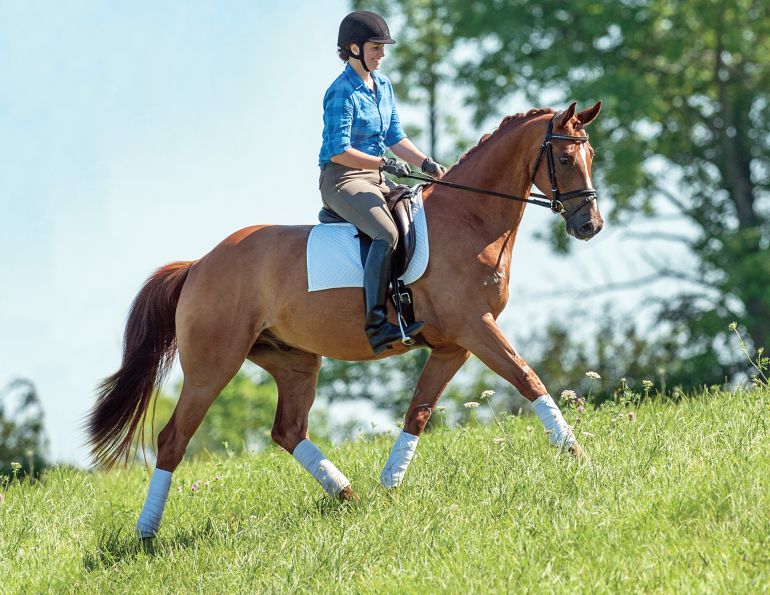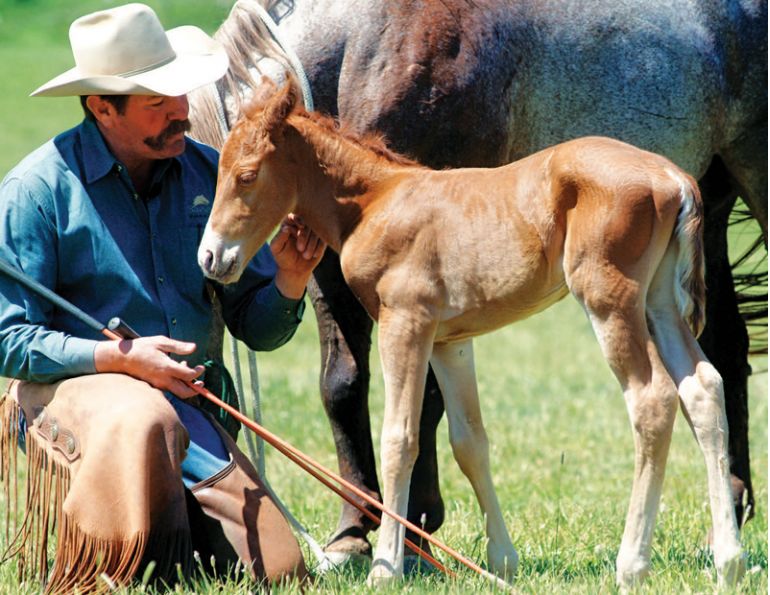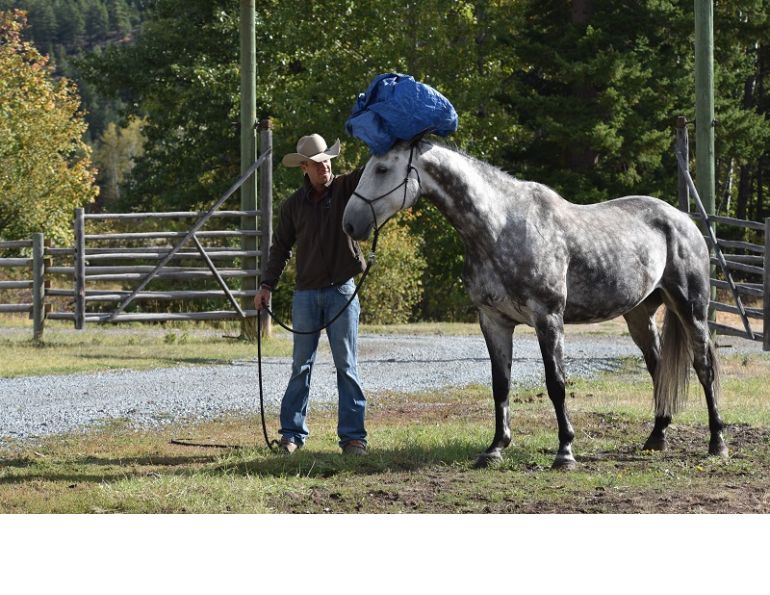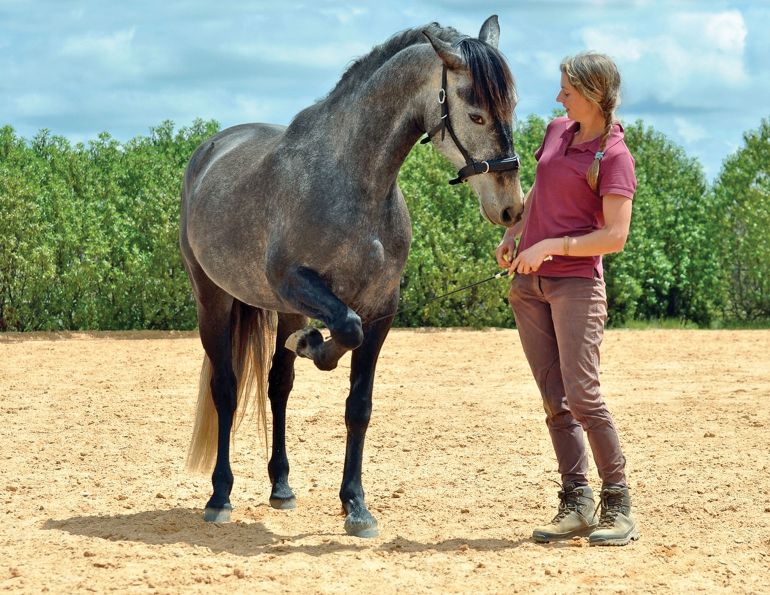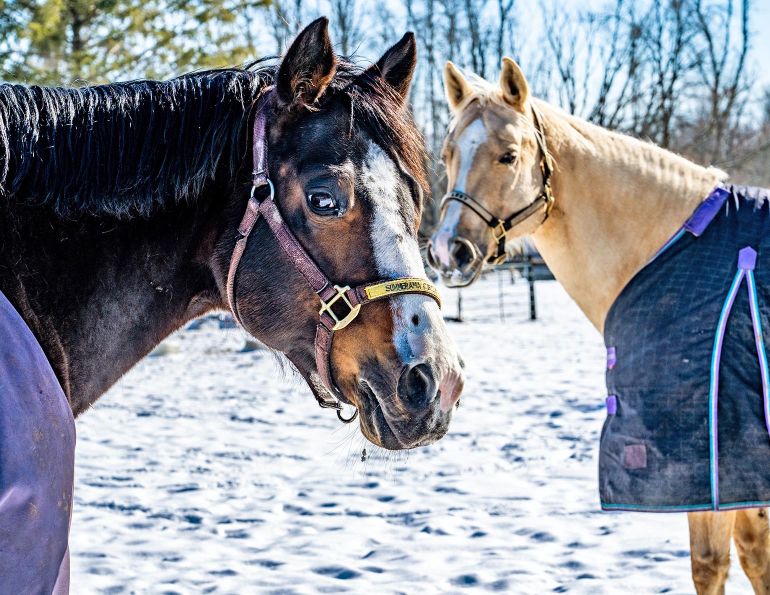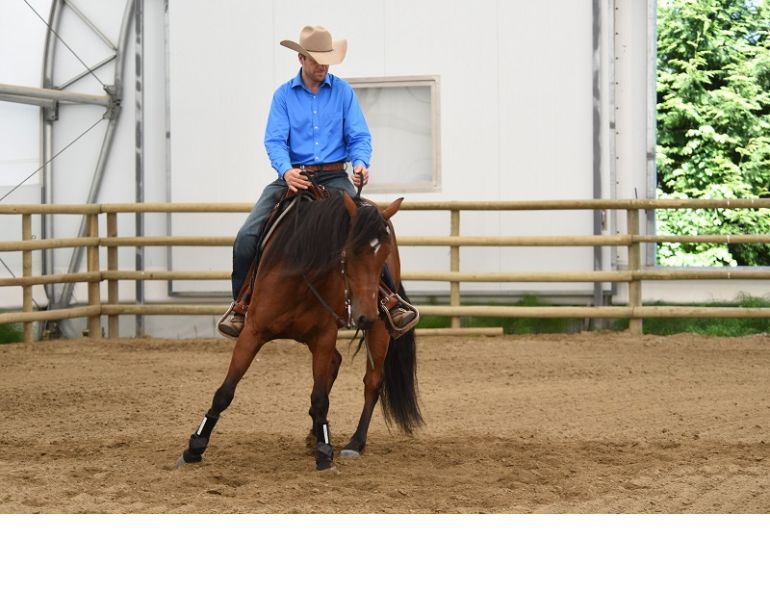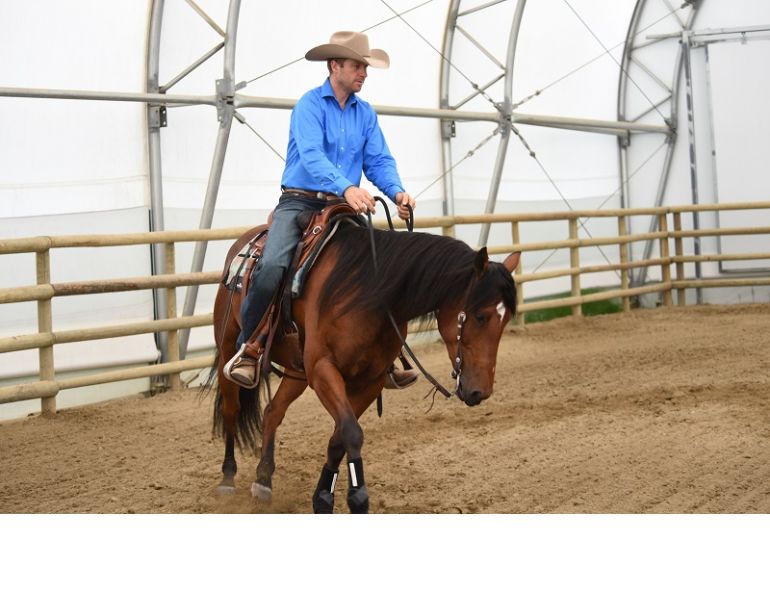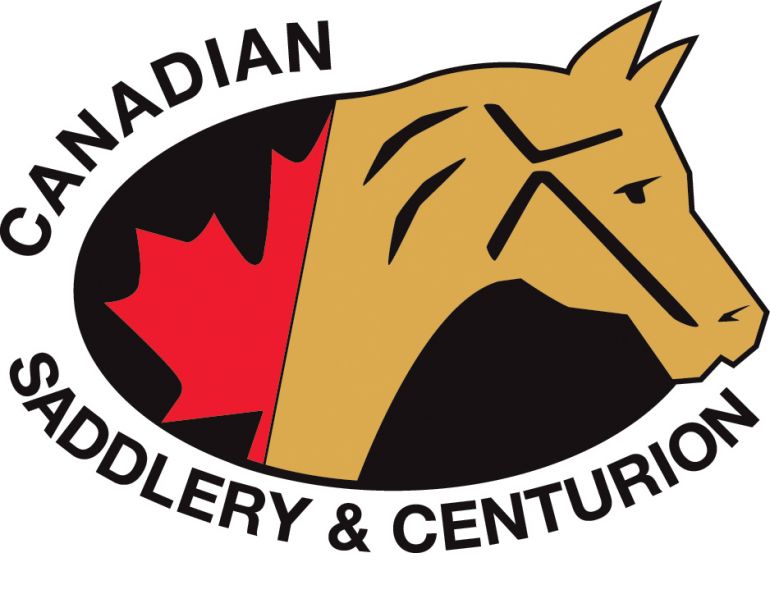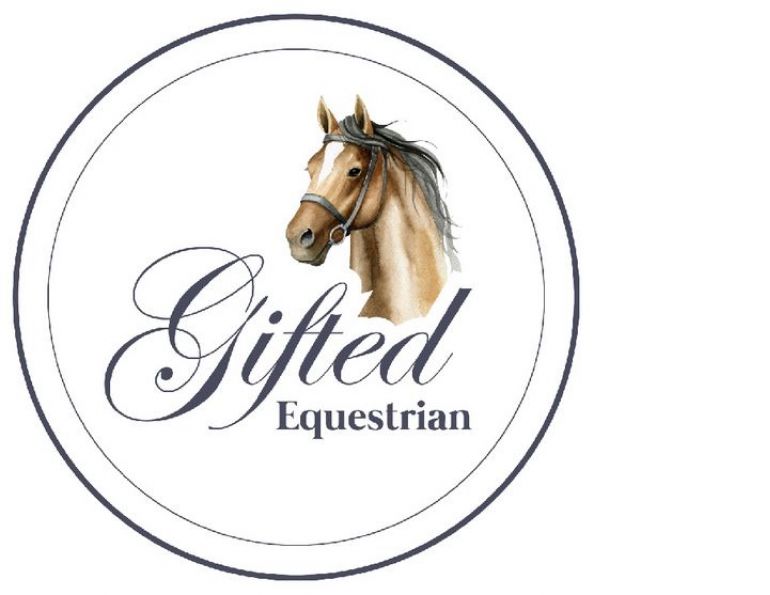By Jonathan Field
In this next series of articles, I will share with you a very special horse of mine named Camaroon LXXXIV, or “Cam”, an eight-year-old Andalusian stallion. I’ve had Cam for two years and we’re really starting to connect. It’s been quite a journey to get here, however, and I want to share some of the gems I have learned along the way.
It has been challenging taking on an eight-year-old stallion that previously had lots of very specific training. Because what I do with him is so different from what he did before, and because he is a stallion, it’s been quite an adjustment for him and sometimes challenging for me. It was like starting over.
I’m sure many of you can relate. Often when you take on someone else’s horse, you can end up riding the horse for years without ever fully getting the horse’s heart and mind connected to you. This is especially true if the horse comes with problems that lead to fear, flight, or fight. In Cam’s case, he would enter one of those modes very quickly, and it would get really risky when he would go into fight mode because the stallion in him would come out.
Cam was in training in Spain until he was four years old and then he was shipped to Canada. I purchased him as a six-year-old. I’ve had a fascination with Andalusians for years, so when the opportunity to own Cam arose, I jumped at it. He is my absolute dream horse! As you can see from the photos in this article, he’s a stunning jet black ball of power. Bred to be a bullfighting horse, he had even begun some of this style of training, which had benefits as well as disadvantages.
By the time Cam was four he had learned a lot of moves. He could do the Spanish walk, lie down, sit, and even piaffe and passage. Unfortunately, he was taught some of these advanced maneuvers too early, and therefore didn’t do them correctly. A very clever horse, when I would ask him to do something, he would use these maneuvers as tricks instead of listening to me or connecting to what I was asking. If he didn’t understand my cue, he would run through his repertoire trying to figure out what I wanted. Of course, I wasn’t looking for any of these maneuvers and that’s when the challenges would begin. He would get frustrated because he would think, “I’ve done all you could possibly want from me and you still haven’t left me alone!” He didn’t realize I was asking for something different.
To address this challenge, I began looking for other ways to do things that he couldn’t possibly relate to his past. If I did things that were similar to what he had done before, such as riding in an arena, he would disconnect and continue trying his old tricks. But if I did things that were new to him, like play with him out in a pasture, at liberty, or with cows, I was able to get him to open up, think about what I was asking, and learn.
It is so valuable to get out of the arena, go to a new area, and allow horses to experience something totally different.
Think of each training session as having three distinct parts: a beginning to warm up, a middle to challenge or train, and an end to let down and cool off. Each part is about 20 minutes in length, for a total of 60 minutes.
1. Off to Island 22
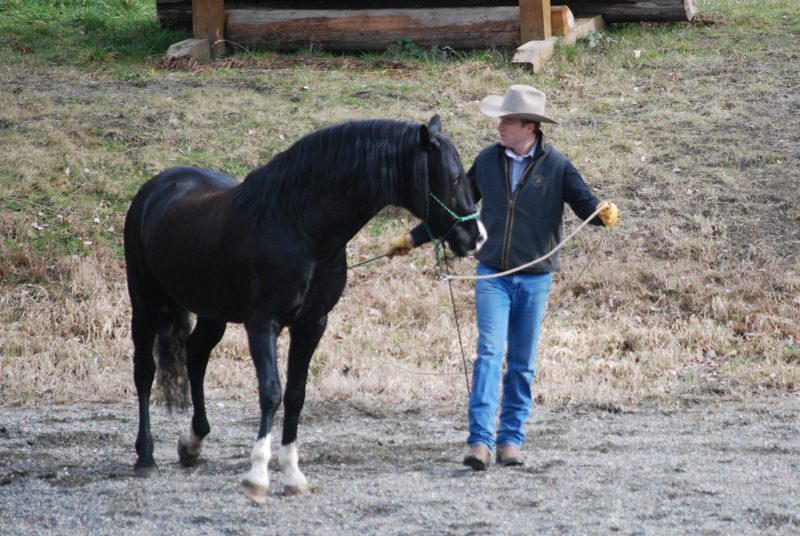
On this fall day, I decided to take Cam out for a new experience at Island 22, an eventing facility in Chilliwack, BC. I wanted to give him the chance to be in a new area with all kinds of obstacles. Island 22 has lots of hills, jumps, water, and trees, so he would really have to be in the moment taking in what he was doing. And besides that, it would be a lot of fun!
When I go to a new area and expose my horses to challenging environments, I try to make it as easy on them as possible and as safe for me as I can. That’s why I often start on the ground.
2. The Beginning: Warm-Up
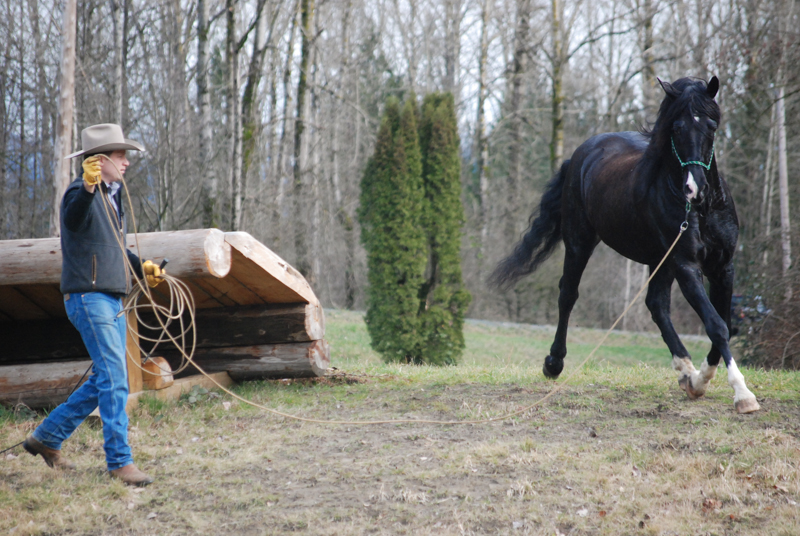
When horses go to a new area they often act like tourists, looking around and trying to take it all in. I don’t mind this for a minute or two, but then I ask the horse to get moving and follow my directions.
I view this as the warm-up phase. In the warm-up, I’m only focused on moving the horse forward on the path I want him to travel. I’m not worried about posture or rhythm. I want the horse to focus on me and what’s in front of him, rather than on his surroundings. It is my responsibility to look out for potential threats out there, and my horse’s responsibility to make sure he doesn’t trip or slip. He needs to have his focus only on me and his immediate surroundings.
Here you can see I’ve moved Cam up into the trot. He is connected to me with one ear and has the other watching his footing. I’ve already put a small hill in front of him and he has gained a nice posture that he wouldn’t have had so easily on a flat arena.
3. Introducing Obstacles
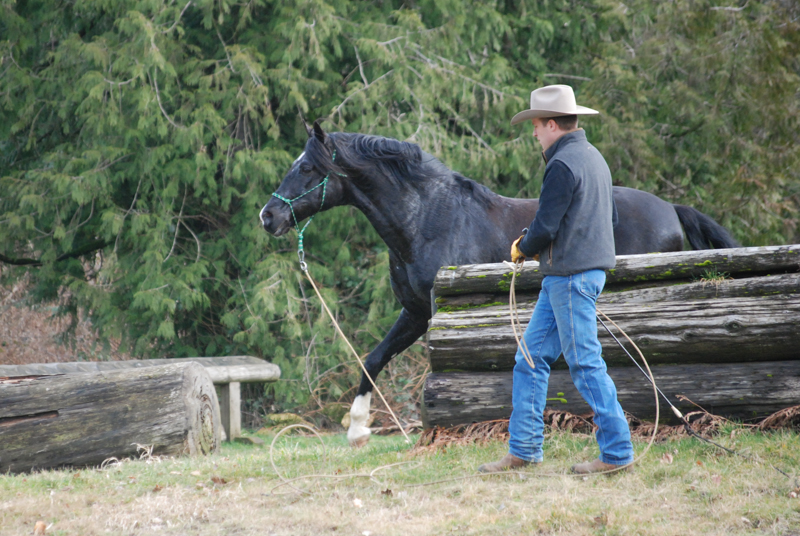
As I continued around the facility, I asked Cam to go over and around logs to keep him interested and give him lots to focus on.
You can use different ropes when doing this. I like to use a long, 45-foot lariat-style rope because it allows the horse to get out away from me and really move and express himself. But there are also some real risks associated with using long ropes, particularly if you’re not very good at keeping track of where the rope is at all times. The design of the lariat rope doesn’t allow you to layer the rope back and forth in your hand, which can be dangerous; holding ropes in coils greatly increases the chance of your hand becoming trapped and injured. If you don’t hold the rope in a coil, it will often be strewn out behind you, creating the risk of getting the rope entangled around your legs. So while I encourage a long rope, you need to work at the level that your skills dictate.
If you do decide to use a lariat rope, always make sure the coils come out as the horse moves further away. This means you may need to turn the rope in your hands each time the horse changes direction. This always makes more sense with a rope in front of you, so give it a try before you use one with your horse.
4. The Middle: Challenge

In every training session, I will ask for some degree of challenge after I’m through the 20 minute warm up. Cam has always been a bit worried about crossing water, but as you can see in this photo he is going towards the water very confidently — I was thrilled! During my warm-up, I could feel him looking at the water with some apprehension, but each time he passed it I could see he was gaining some interest in it. When I pointed him at it, he went right for it.
5. A Drink

Maybe that’s why he was so keen to go in – he was thirsty! Over the past few months I had intentionally rested Cam in water whenever I had the opportunity. For example, after a long haul in the trailer I would stop by a creek for a rest and let his legs soak in the water, and each time I trained near the James Creek on our ranch, I would ride the whole ranch and then rest Cam in the creek right before the ride was over. I could tell this had worked.
6. Jump!

Of course, we might as well take the opportunity to jump out!
7. The End; Cool Down and Relax
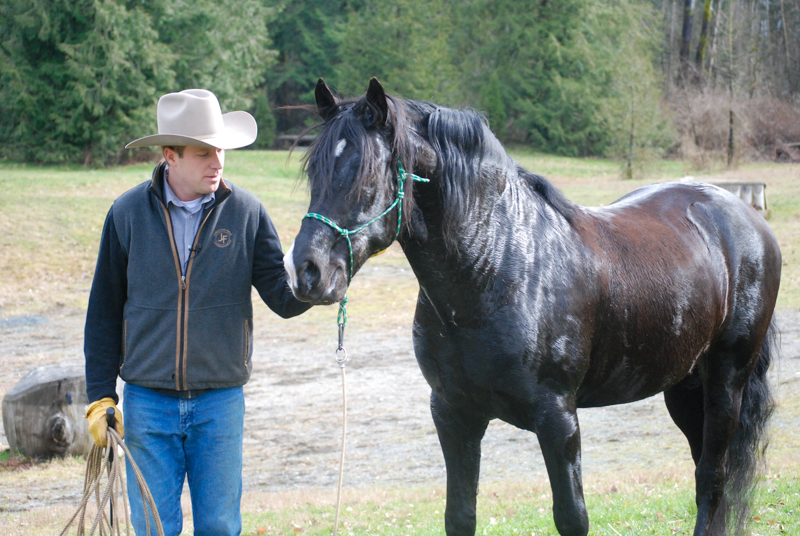
At the end of each session, I allow the horse to relax and look around, and if the horse is sweaty I walk him until he is dry. I let the horse calmly walk around and allow him to sniff and be curious about his surroundings.
You might think my way is a bit backwards: I start out with lots of movement in the beginning, requiring the horse’s attention on his immediate surroundings, and then allow him to be a curious tourist at the end when he is connected and relaxed. By doing it this way, I maintain a connection and control of the horse. When he is being a tourist at the end of the session, it’s because I’ve allowed it. If needed, I could get his attention back quickly because I have maintained a connection. If I let the horse be a tourist in the beginning when I have not yet achieved that connection, I would be unable to get the horse’s attention when needed.
You can see by Cam’s neck that he has developed a sweat and is now standing quietly beside me. This has been a great opportunity for Cam to get out of his stallion pen and do something physical. He has very nice stallion accommodations but no horses to live with, so I’m his only buddy and social interaction (except for a few “frisky” encounters in the spring). Because of this, the sweat you see is more an emotional sweat from being in a new area rather than a physical sweat from working hard.
After this photo was taken, I put a wool cooler on Cam and walked him dry. If I make a horse sweat, I stay with him to remove it. The cool down should take as much time as the warm-up.
A Safety Note
When learning anything new with horses, I strongly recommend not using a stallion. A stallion is more different from a mare or gelding than most people realize and there are serious risks associated with incorrectly training or handling one.
Read the next article in this three-part series, "Connecting with Cam, Part 2: Playing with Horses at Liberty".
To read more articles by Jonathan Field on this site, click here.
Photos: Robin Duncan Photography




